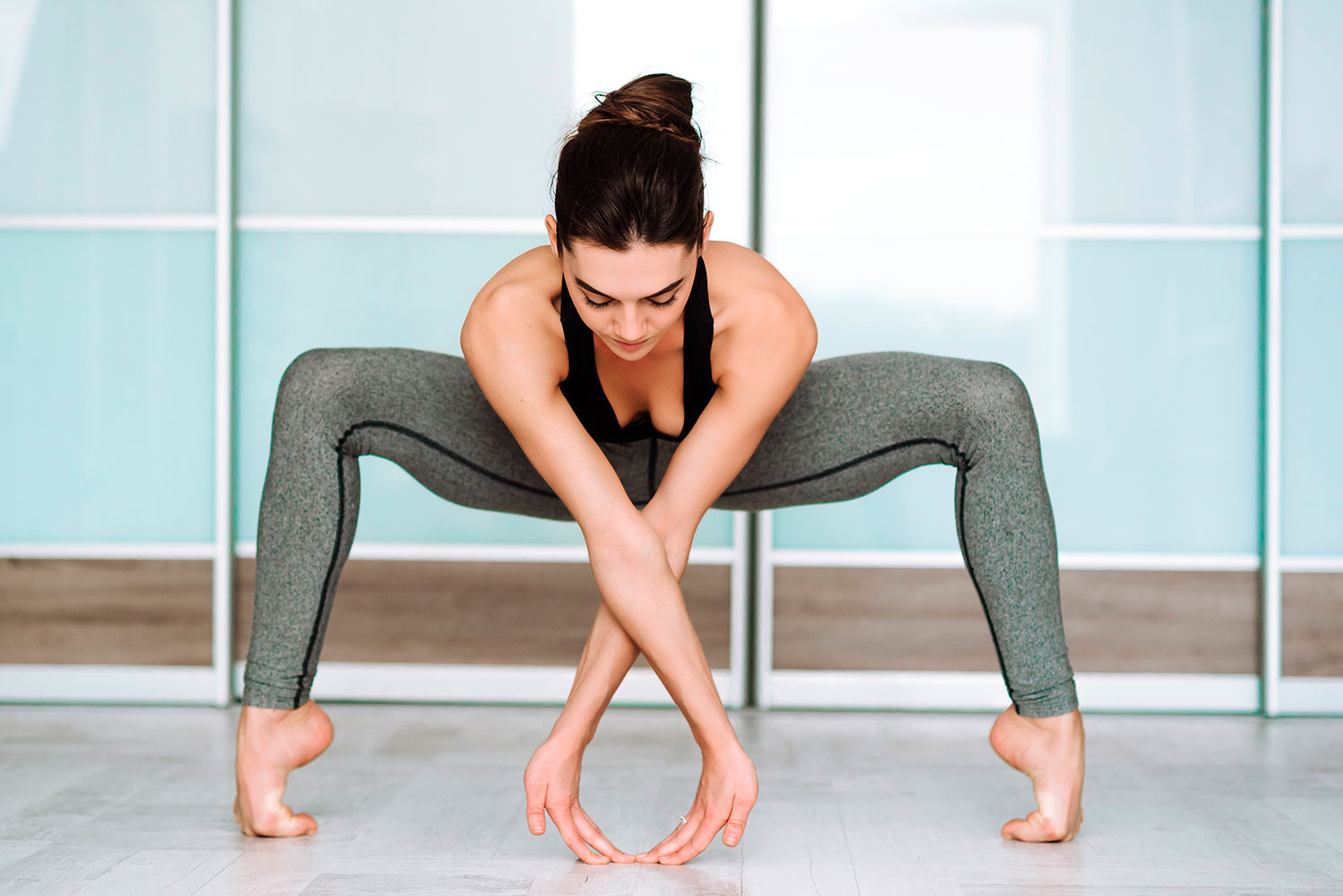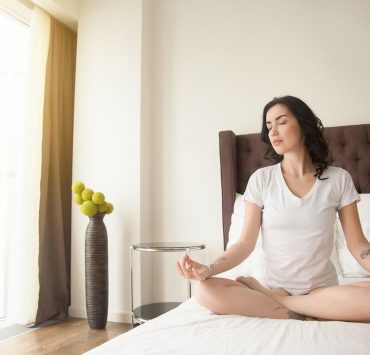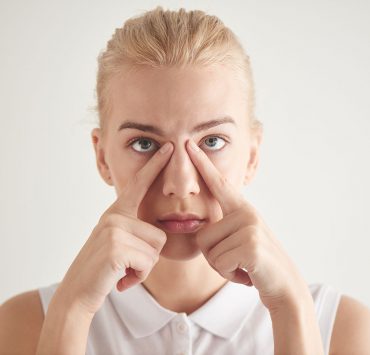
Having been a teacher’s assistant at over 50 yoga teacher…
If you struggle with depression or anxiety, you have come to the right place. Yoga and meditation are tools you can use at any time to combat these emotional burdens. The first lesson is to master your breath. Within yoga and meditation, breathing is the guiding principle. This will help you become aware of your emotions in relationship to your physical body. You can use yoga and meditation techniques to not only quell panic attacks, but to feel happier and lighter overall. This article highlights why these methods work and how to do them right now to heal yourself.
The Anxiety Brain

There are so many different circumstances and events in our lives that cause stress and anxiety. Our triggers may vary, but the physical response is almost identical.
What actually happens when we experience anxiety?
The fight or flight response is responsible for taking over when we are in physical danger. The sympathetic nervous system stimulates the adrenal glands, which increases our respiratory rate, blood pressure, and heart beat. This mechanism prepares us to survive, but in the modern world, the fight or flight response is often triggered without the presence of real danger. And even if that perceived threat only lasts a few seconds, it can take the body anywhere from 20 – 60 minutes to return to its balanced state.
When we are under extreme stress or anxiety, it can feel almost impossible to shut this part of ourselves off. Fear is to blame. To combat these inevitable circumstances, we must activate the parasympathetic nervous system. This part of the brain is responsible for the relaxation response. When we tap into this mechanism, our bodies return to a state of calm and rest. The heart rate slows down, gastrointestinal muscles relax, and the body is able to let go without fear. Yoga, especially restorative, activates the parasympathetic nervous system, making it an amazing anti-anxiety practice.
The Depression Brain
Depression looks different than anxiety in many ways, however, some types of depression can be induced by anxiety. While medications such as antidepressants help treat the underlying causes of chemical imbalances that contribute to depressive disorders, they don’t always help completely. With mood disorders, the autonomic nervous system becomes out of balance, just like how it does in times of stress. Depression is still considered a form of stress, just on the other end of the spectrum. Instead of “fear highs”, there are “sad lows”.
One study at Boston University, published in Time Magazine, followed 30 individuals with depression. Half of the participants took a 90-minute yoga class three times a week and did four 30-minute sessions at home each week. Those in the other group took two group classes and three home sessions per week. These classes also included 20 minutes of deep breathing. After three months, most participants had lowered their scores on a depression-screening questionnaire by at least 50%. And, those who took three classes per week had even lower depression scores than the individuals who only did two.
Breath Awareness
Breathing is incredibly important to controlling anxiety and depression. Often times, you may not even notice that your breath is shallow or rapid, or that you may be holding your breath under stress. When you are experiencing acute anxiety or depression, become aware of your breath. How deeply or shallowly are you breathing? Are you taking short inhales and short exhales? Try to elongate the breath as much as possible, and breathe from the belly too, not just the upper chest. Take 4 seconds on an inhale, and 4 seconds on an exhale. Repeat this 10 times until you begin to feel calmer.
Pranayama

Pranayama or breath control is a foundational practice in yoga. Different types of breathwork can be used for both anxiety and depression.
Dirgha Pranayama – Three Part Breath
Sit in a comfortable position on your yoga mat or in a chair with your eyes closed. Place one hand on your belly.
Inhale, and expand your belly into your hand. Exhale, and allow your belly to come back towards the spine. Repeat 5 times.
Move your hand to the side of your ribs. Inhale, and feel your ribs open into your hand. As you exhale, notice your ribs fall back to the belly. Repeat this 5 times.
Lastly, place your hand on your chest. Inhale, breath into the chest, and expand the lungs. On the exhale, relax your thorax. Repeat 5 times.
Continue to expand and contract the belly, ribs and chest for 5 minutes and up to 20 minutes at a time. Every inhale and exhale should last 4 seconds or more.
Ujayii Pranayama – Ocean Breath
Ujayii makes an “ocean sound” through vocal contraction. To practice engaging this throat muscle, exhale through the mouth and pretend to fog up a mirror. Repeat this several times on both the inhale and exhale.
When you are ready, start with dirgha pranayama for several rounds. Continue to breathe through the nose, and gently contract the back of the throat on both the inhalation and exhalation.
As you repeat, explore making the sounds louder and softer. Concentrate on the sound and the sensation in the back of the throat.
Practice this breath for 5 minutes and up to 20 minutes at a time for deep relaxation and to lift your mood.
Nadi Shodhana Pranayama – Alternate Nostril Breath
1. Nadi shodhana pranayama is translated as the “channel-purifying breath”. In yoga, the nadis are subtle energy pathways throughout the body. By breathing through different nostrils, you cleanse and balance the right and left hemispheres of the brain.
2. Make vishnu mudra with your right hand and bring it up to your face. On your first inhale, close the right nostril with your thumb and slowly inhale through the left side.
3. At the top of the inhalation, close the left nostril with your ring finger and exhale through the right side.
4. Inhale through the right side, then close your right nostril and exhale through the left. If you feel confused at first, just remember to switch only before you exhale.
5. Repeat this breath for 5 minutes and up to 10 minutes at a time.
Meditation

Simple meditation techniques can help you withdraw your mind from obsessive thoughts and over attachment to emotions. Try the following practice to clear your mind and help you feel better right now.
1. Sit in a comfortable position in a chair or on your mat, or lay down with your eyes closed.
2. Become aware of your breath. As you breathe in slowly and deeply, expand your belly and chest. As you exhale, relax every muscle of the body. Practice this for 1 minute.
3. With your mind’s eye, pay attention to your feet. Notice the qualities of both feet, and intentionally relax those muscles.
4. Move your awareness up to your legs, noticing any sensations that are present. Relax your legs.
5. Continue to scan the rest of the body like this and soften these areas, going all the way up to the face and head.
6. Practice this every night before you go to bed for deeper and more peaceful sleep. Invoke this exercise at any point during the day if you feel stressed, depressed, or anxious.
Yoga Postures for Anxiety and Depression
Any yoga posture that focuses on posture and is somewhat gentle is great for anxiety and depression. The following six poses can be performed in a sequence at home, whenever the mood strikes you. The more you practice, the better you will be able to reduce your symptoms of anxiety and depression.
Balasana — Child’s Pose

Begin in table position. Spread your knees wide apart while keeping your big toes touching. Rest your sitz bones back on your heels. If you have very tight hips, keep your knees and thighs together.
Sit up straight and lengthen your spine. Exhale, bow forward, and let your torso fall between your thighs. Bring your forehead to the floor if your body allows it.
Extend your arms straight in front of you with palms down. Press the palms into the earth to push your glutes against the heels.
For deeper relaxation, rest your arms back by your thighs with your palms facing up. Completely relax your elbows and let your shoulders soften.
Continue this posture for at least one minute or longer for intense relaxation.
Salamba Sarvangasana — Supported Shoulder Stand Pose

Inversion postures help combat depression and elevate mood naturally.
Lay on your back with your legs extended and your arms by your sides.
Bend your knees and place the soles of your feet on the mat.
Inhale, use your abdominal muscles to lift your legs and hips off the floor. Curl your torso and bring your knees toward your face.
Lift your hips to the ceiling and align your torso perpendicular to the floor.
Bend your elbows and place your hands on your lower back for support. Keep your elbows on the ground, shoulder-width apart.
Straighten your legs fully and point your feet up to the ceiling, keeping your head and neck in line with your spine.
Hold posture for at least 10 breaths or longer. To release, bring the knees into the chest and lower the spine down one vertebrae at a time.
Upavistha Konasana — Seated Wide Legged Forward Bend

Take a seat on your mat in staff pose, Dandasana, with your legs extended in front of you. If your groin feels tight, place a folded blanket underneath your sitz bones.
Lean back slightly, place your hands on the floor by the sides, and open your legs as wide as you can.
Rotate the thighs internally by reaching underneath the bottom of each thigh and pulling it away from you. Your knees will point up towards the ceiling.
Flex both feet so the toes point up to the sky.
Walk your hands between the legs and continue to extend the torso forward with a straight back. Once you have gone as far as you can, you may round the back and lower your forehead towards the mat.
Stay in this posture for at least 1 minute. To release, walk the hands back in towards the groin and lift up one vertebrae at a time, head coming up last.
Adho Mukha Svanasana — Downward Facing Dog

Come onto the mat on your hands and knees in table position. Hands should be under the shoulders with knees under the hips.
Spread your fingers wide apart on the mat and firmly press down with the palms. Tuck your toes underneath and press them into the mat.
Exhale, lift your knees off the mat and keep them parallel to each other as you straighten the legs.
Once the legs are completely straight, press your heels towards the back of the mat. Lift the tailbone up towards the ceiling.
To avoid putting too much weight on your shoulders, press your chest towards your thighs and face the inner elbow creases towards each other.
Keep the head between the upper arms, and gaze in between the hands. Hold this posture for 5-10 breaths. Release back to table posture.
Bhujangasana — Cobra Pose

To begin, lay on your belly with your legs extended behind you. Your feet should be as close together as possible.
Place your hands flat on the mat underneath the shoulders. Draw your elbows in towards the midline of the body. Press your pelvic triangle against the mat and tuck your tailbone inward.
Lift your upper torso off of the mat and resist using your hands to push you up. Extend your crown up to the ceiling and continue to lift your belly off the floor, now using the hands to extend your arms and lift the spine.
Roll your shoulders down and back to create space for the chest to open and keep the back arched as much as possible, continuing to press the pelvis down. Hold this posture for at least 1 minute of breath.
Savasana — Corpse Pose

Lay on your back in supine position. Arms are down by your sides.
Open your legs slightly and let your toes fall outward. Open your palms up to the sky.
Draw your shoulders down away from your ears and relax all the muscles in the body.
Close your eyes and listen to your breath for a few moments. Then, completely withdraw your senses and intention of focus. Allow relaxation to take over as you let your body be held by the earth.
Remain in savasana for at least 5 minutes, until as long as you’d like. Do this after a posture sequence to integrate your practice and let the body cool down.
Be Here Now

The most important part in your journey is to be present. The worries and fears you experience may be related to past events, or a possible future that has yet to come. All we really have is this moment, so how do you want to spend it? Are you willing to take control of your anxiety or depression? To quote mindfulness guru Jon Kabat-Zinn, “You can’t stop the waves, but you can learn to surf.” Yoga and meditation can teach you how to ride the tides of an unpredictable ocean. All you have to do is get on your board and commit to this loving and compassionate practice. Do it for yourself and your wellbeing today.
What's Your Reaction?
Having been a teacher’s assistant at over 50 yoga teacher trainings worldwide, Rebecca Rebecca has a firm grasp on the fine art of yoga and meditation. In her work, she carefully reflects on a vast expanse of knowledge to help others find peace in both body and mind.














